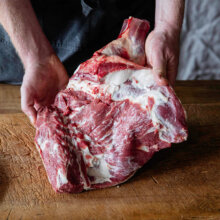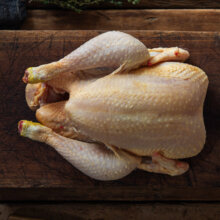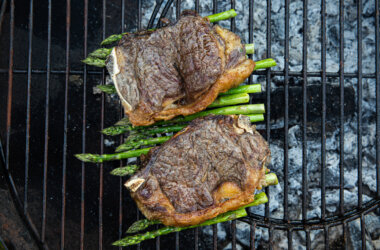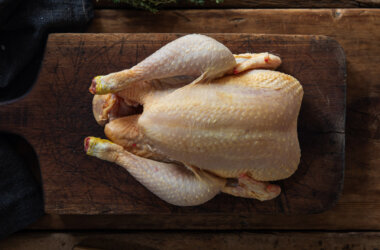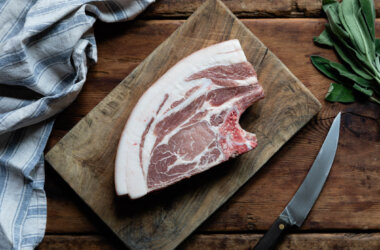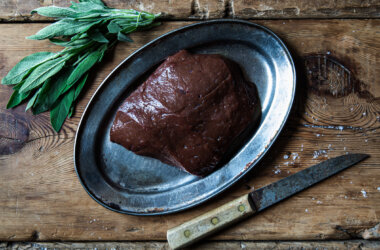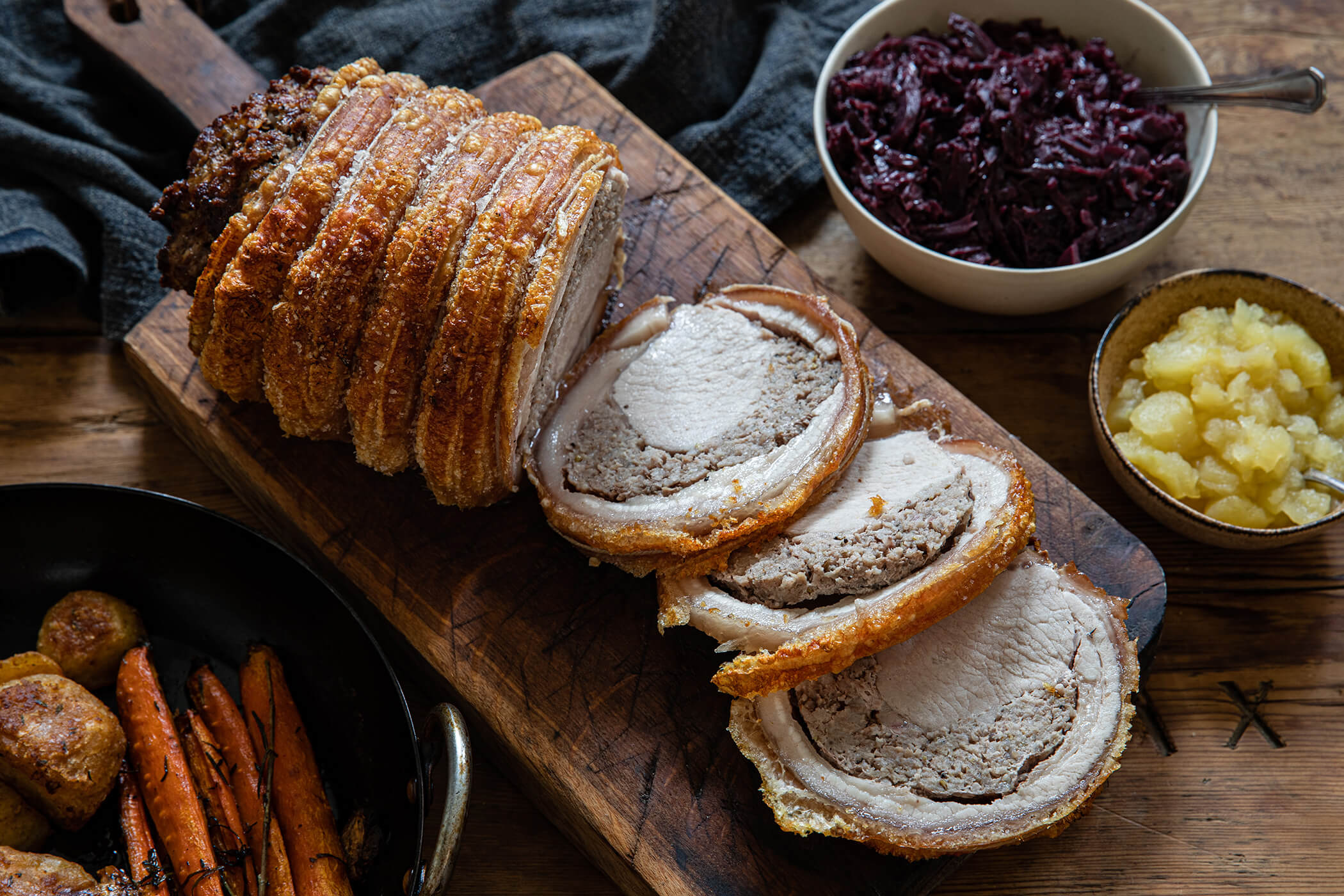
What is Porchetta?
How to Cook Porchetta: If you’ve ever enjoyed a hog roast sandwich late at night, porchetta will offer just as much, if not more, satisfaction.
A staple in central Italy, especially in Lazio, Tuscany and Umbria, porchetta is often served from street vans that resemble old-school ice cream trucks. In Italy, simplicity is key. A porchetta sandwich typically involves nothing more than a plain bread roll and a pinch of fine sea salt (the bread itself is unsalted). Rarely is anything added, allowing the succulent pork and subtle herbs, usually fennel and rosemary, to shine. Just like a 99, sometimes the simplest things are the best.
Porchetta is made with pork loin and belly, stuffed with herbs, spices and salt. The dominant flavour is fennel, which pairs beautifully with pork, alongside rosemary, thyme and occasionally chilli flakes. We season our porchetta with our Tuscan-Style Sausage Meat. This rich stuffing adds texture and flavour to both the belly and loin, while the fennel seeds nod to the classic Italian recipe.
As with any great pork roast, crackling is essential. Thanks to its fat content, pork belly delivers outstanding crackling. For the best results, dry the skin before cooking. Ideally, unpack the night before, pat dry, and leave uncovered in the fridge to air-dry.
Porchetta Cooking Time
Traditionally roasted over wood for up to 8 hours, porchetta can be started at a high heat or finished on one. A smaller Swaledale porchetta, made from native breed pigs, will need around 2 to 3 hours in the oven. We recommend starting at a lower temperature to render the fat and finishing on a higher heat to crisp the crackling.
How to Cook Porchetta
- Leave the porchetta uncovered in the fridge for around 24 hours to dry out the skin.
- Preheat your oven to 220ºC.
- Generously season the scored skin with fine sea salt, working it well into the cuts.
- Place the porchetta on a metal trivet in a deep roasting tray. Coarsely chopped onions and carrots can be used instead of a trivet.
- Roast in the centre of the oven for 20 minutes.
- Reduce the temperature to 150ºC and continue roasting for 22 minutes per 500g.
- With 20 minutes remaining, check the crackling. If it needs crisping, increase the heat back to 220ºC. If it’s already well-browned, loosely cover with foil to prevent it from burning.
- Rest the joint for at least 25 minutes before carving.
We recommend slicing it thinly, though you can serve it however you prefer.
Top Tips for Cooking Porchetta
- Essential advice for getting perfect crackling, maximising flavour and making the most of this classic Italian roast.
- Don’t throw away all the fat rendered during cooking. It’s full of flavour and ideal for roasting potatoes, frying bread or stirring into creamy mashed potato for extra richness. It also makes an excellent base for gravy or sautéed greens.
- For crisp crackling, make sure the skin is completely dry before roasting. Leave the porchetta uncovered in the fridge overnight and pat it dry just before seasoning.
- Always rest the porchetta before carving. This allows the juices to redistribute, resulting in more tender, succulent slices.
- Slice thinly for sandwiches or cold platters, or serve hot with roast vegetables and seasonal greens.
What to Serve with a Porchetta
- Delicious ideas to complement your roast, whether you’re serving a Sunday lunch or a casual sandwich.
- For a sit-down meal, porchetta works well with seasonal greens. Cavolo nero braised with garlic and olive oil is especially good, offering a pleasing contrast to the rich pork. Spinach, chard or mustard greens are also excellent options cooked in the same way.
- Use the skimmed fat from the joint to roast your potatoes. The flavour it brings is exceptional. The juices left in the roasting tray make a perfect base for gravy. Deglaze with pork or chicken stock and add a little reserved cooking water from your vegetables or potatoes for balance.
- Porchetta also makes an outstanding sandwich. A crusty roll is ideal, with perhaps just a spoonful of the cooking juices or a pinch of sea salt. Keep it simple and let the pork shine — ideal for feeding a crowd or enjoying the leftovers.
